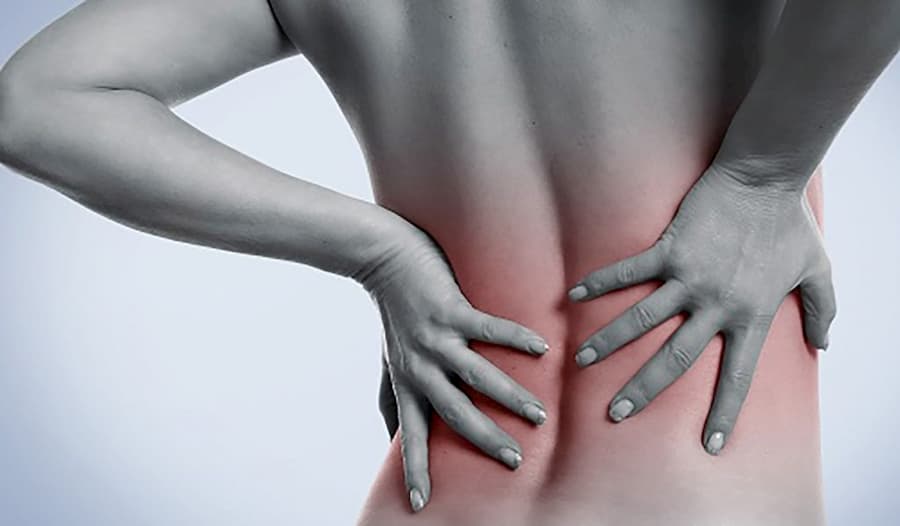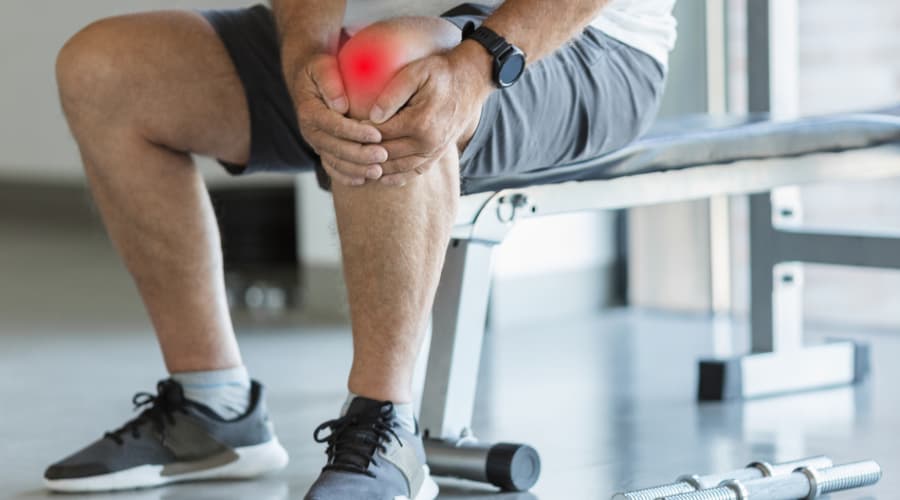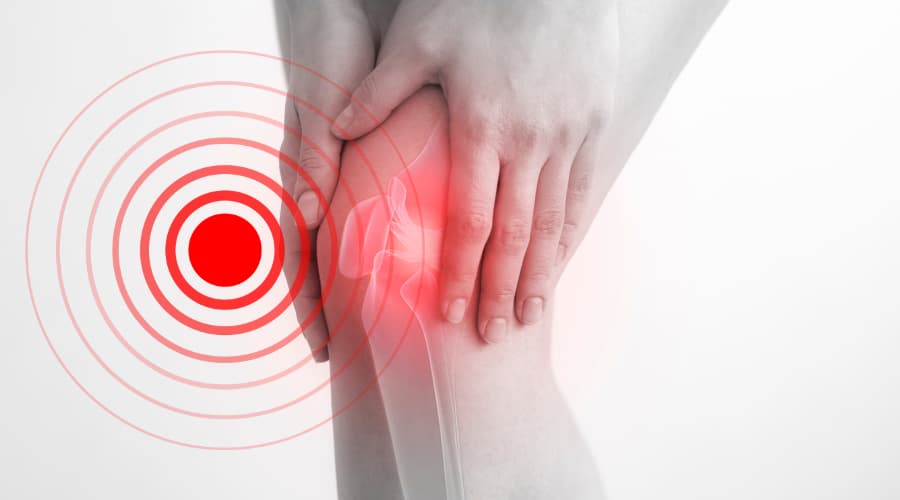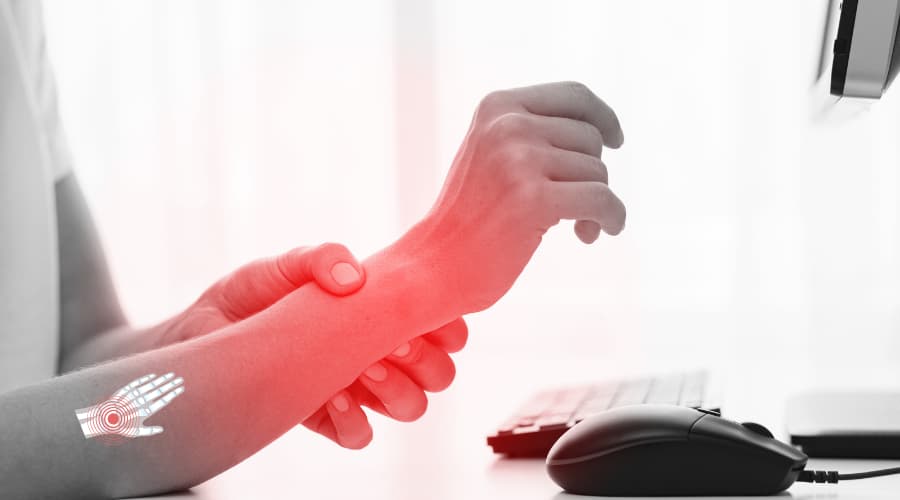Shockwave therapy is used for the treatment of chronic tendon inflammation in the knee, elbow, sole and heel of the foot, hip and shoulder.
This includes:
- Achilles tendinopathy
- Greater trochanteric pain syndrome
- Proximal hamstring
- Calcific tendinopathy in the shoulder
- Patella tendinopathy
- Plantar fasciitis
- Golfers and tennis elbow
Radial shockwave therapy involves a series of shock waves for the treatment area. A shock wave is mechanical as opposed to electrical. An inflammation like condition in the tissue is triggered by the treatment. The response of the body is an increase in the metabolism and blood circulation in the treatment area. This accelerates the natural healing process of the body. The calcifications and injured tissue are broken down by the shock waves.
Shockwave therapy is also referred to as (ESWT/ECSWT) extracorporeal shockwave therapy and radial shockwave therapy.
When Shockwave Therapy Should be Considered
Shockwave therapy is recommended for any individual who has already had three conservative therapies with no improvement with the condition present for a minimum of six months. A lot of individuals will put off having treatment. This is not recommended for tendinosis conditions because additional damage can result from the constant use of degenerative tendon tissue. A good example is an individual experiencing pain every time the arm is used to lift something or their weight is placed on the heel. This happens because the tendon fibers are being pulled.
If the condition should progress to a rupture, shockwave therapy will no longer be a viable option. The only remaining treatment option will be invasive surgery. New issues can also be experienced if the condition is not treated. When an individual has pain in their foot, the natural response is to compensate by limping or walking on their toes to protect their body from pain. Unfortunately, as time passes these abnormal movements will strain the lower back, hips and knees. In the worst possible scenario. the other foot can develop the same condition. Any time chronic pain is not treated, there will most likely be compensation issues.
When the pain is still recent, it may be possible to avoid shock wave therapy by acting quickly. There are specialists available who may be able to resolve the issue. It is critical to receive treatment immediately to properly take care of the problem and the body.
The Reasons Other Types of Treatment are Often Ineffective
When the condition is less than six months old, it is referred to as acute tendonitis. In some instances, this condition may resolve on its own. Sometimes treatments including physical therapy, cortisone injections, strapping and anti-inflammatory medications can be effective. Acute tendonitis is basically just an inflammation. Every treatment used during the initial six months is focused on handling the inflammation and resting the area.
If the condition does not improve during the acute phase, it is referred to as chronic tendonitis. The difference between these two stages is simple. Chronic tendonitis is damaged or degenerative tissue. Acute tendonitis is an inflammation. If the issue has already developed past the acute stage, repeated steroid injections are not going to help. During the past, the only option for treating tendonitis was surgery. Shockwave therapy is an effective treatment because the damaged tendon is forced to heal.
The Equipment Used During Shockwave Therapy
The Dornier EPOS Ultra is often used for shockwave therapy. This is FDC Class equipment approved for treating chronic plantar fasciitis. Many medical experts believe this state of the art, high-quality device is the best on the market. There are three main reasons the Dornier EPOS Ultra is often preferred. These are:
- Ultrasound is used by the Dornier EPOS during the process of treatment. This enables the medical professional to find, see and target the area where the injury or damage is located with pinpoint precision. The shock waves can then be sent only where they are required. This results in a successful treatment.
- This equipment is a high energy shock wave machine with a wide selection of penetration depths and settings. This enables the technician and the medical professional to fine-tune the settings according to the diagnosis of each individual. This is a customised treatment as opposed to a one size fits all method.
- This machine sends shock waves from the side of the heel to treat the tendon. The shock waves with the other available equipment are sent from the base of the heel. This impacts the heel bone which is extremely painful. Since the Dornier EPOS does not impact any bone, IV sedation and general anaesthesia both become unnecessary.
The Dornier EPOS Ultra represents excellence in shockwave therapy. This is because it provides the most variable, yet the highest output of energy. Ultrasound is also incorporated to enable viewing of the injured tissue. This means the shock waves are sent directly to the damaged tissue and nowhere else. The equipment has the capability of performing treatments using both high and low energy. Therapy using low energy shock waves is not used for plantar fasciitis. The FDA has only approved and tested high energy shock waves for this condition.
High energy shock waves cause microtrauma or cavitation to the tissues. The body is forced to create new fibroblast tissue capable of repairing the tendon while impacting the pain receptors. Shockwave therapy using low energy shock waves only impacts the pain receptors. Local anaesthetic cannot be used with low energy shock wave therapy since a local injection will negate the results of the treatment on the pain receptors. This means the patient has to be able to handle the pain caused by the treatment. Once the individual has reached their tolerance for pain, increasing the energy level any further is no longer possible.
Therapy using low shock waves requires multiple treatments to impact the pain receptors. There have recently been some companies manufacturing devices using unfocused waves of pressure. Although they are attempting to represent these devices as shock wave machines, they are different. Devices using pressure waves are used to trigger point pain and relax muscles. These are not shock wave machines and will not provide the same function or results for the body. Treating plantar fasciitis requires am ESWT device.
Extracorporeal Shockwave Therapy Treatment
ESWT or extracorporeal shockwave therapy is a non-surgical procedure requiring approximately eighteen minutes for the treatment of Achilles tendonitis, chronic plantar fasciitis, shoulder tendonitis, tennis elbow and other types of chronic tendinopathies. Lithotripsy is a therapy using shock waves for dispersing and breaking apart kidney stones. Once the urologists realized the patients experiencing this procedure had new tissue growth and an increase in bone density, the benefits of shockwave therapy increased.
Shockwave therapy is used all over the world to treat conditions throughout the entire body. The FDA performed a study in the United States for individuals with chronic plantar fasciitis both without and with heel spurs. The results determined there was a 92 percent decrease in pain after just one treatment. One of the main benefits of shockwave therapy in the treatment of the condition is extracorporeally or outside of the body. The non-invasive nature of the treatment means a lot of the surgical risks and expenses have been eliminated. Shockwave therapy is effective for orthopedic shock wave procedures.
The Effectiveness of ESWT
The NICE study regarding the protocol for shockwave treatment showed an overwhelming rate of success. There were 150 participants in the study. They were asked to rate their level of pain on a scale of one to ten. Prior to the treatment, the average pain level was 7.7. After one shock wave treatment, the patients were asked to once again rate their pain using the same scale after a year had passed. The average pain rating among the participants who responded was 0.6. The decrease in pain was 92 percent. This is a significantly higher success rate than for all of the other surgical and non-surgical procedures.
Shockwave therapy is extremely safe. According to the protocols backed by research, the majority of conditions will require between three and six sessions of ESWT. For conditions present for a long period of time, additional sessions might be necessary. The best results occur when the sessions are one week apart.
The Shock Wave Procedure
The shock wave procedure is performed extracorporeally, does not require surgery and is non-invasive. No long period of recovery is necessary. The individual does not risk further damage occurring and misses extremely little time at work. The opposite is true of surgery. The procedure begins with a complete assessment by a medical professional. This is to determine if shockwave therapy is appropriate for the specific injury or damage. In many instances, other treatments are combined with ESWT to ensure a full recovery. The exact location of the pain is determined by finding painful points.
A gel is used on the skin to improve the contact of the hand-piece to the skin. This provides the shock waves with better penetration of the body. The machine used for shockwave therapy delivers acoustic wave pulsations in a series right to the area of the injury. There is some pain associated with the treatment but it is considered tolerable. During the course of the treatment, the patient is placed in a comfortable position. The area requiring treatment rests on a water-filled, soft membrane on the machine. A local anaesthetic is provided to help ensure the comfort of the patient. The technician will ensure the individual remains comfortable during the procedure.
An ultrasound scan is used by the technician to view, scan and target the damaged area. The patient will hear repetitive clicking noises during the procedure. The comfort of the patient is one of the top priorities of both the technician and the medical professional. The shockwave treatment has been performed often so the technicians know how to use the different levels of shock waves to ensure the treatment is as comfortable as possible. In most cases, less than eighteen minutes are required for the actual shockwave therapy. The actual sessions are longer because they include advice, education and the creation of a post-treatment plan for recovery.
The Recovery Process
Shockwave therapy forces the creation of new tissue cells in the damaged area. The healing process is gradual and occurs over a period of days, weeks or even months. Although it is fairly uncommon, there may be some mild bruising or soreness after the treatment. This will go away naturally. There have been individuals who did not feel any more pain beginning with the very first day. By the thirteenth week, most of the patients will be noticing a significant improvement in their level of pain. After sixteen weeks, roughly twenty percent of all the patients will require another treatment.
Since the damage occurred over a period of time, it makes sense the healing process will also require time. Complete healing of the injury can require as long as a year. The best part about shockwave therapy as opposed to having surgery is the individual can prevent the injury from becoming worse before it gets better. Since there is no painful and lengthy post-procedure recovery necessary, there is no need to take a lot of time off of work or plan for a lengthy recovery.
The Benefits of Shockwave Therapy
Using shockwave therapy for specific injuries offers the individual a lot of benefits. In addition to providing a fairly painless, non-invasive and drug-free treatment method, the additional advantages of ESWT include:
- Helping to improve mobility
- Helping to decrease musculoskeletal pain
- Helping to provide faster recovery for injuries
Another advantage is the risk of infection has been eliminated since the skin is not penetrated during the procedure.
Is the shockwave treatment itself painful?
Sometimes the treatment is a bit painful, but most people can stand these few intense minutes without medication. If you are in pain during the treatment please notify your medical practitioner as there are some adjustments that can be made to reduce the discomfort, however, having some pain during the treatment illustrates that shockwaves are having a positive effect.
Will I be in pain after the treatment?
You will normally experience a reduced level of pain or no pain at all immediately after the treatment, but a mild and diffused pain may occur a few hours later. This dull pain can last for a day or so.
What shall I do if I am in pain after the treatment?
Radial Shockwave Treatment initiates a pro-flammatory condition in the tissue that is being treated. If necessary you may use ordinary prescription-free pain killers. Do not use anti-inflammatory medication and do not use ice on the treated area as both will interfere with the body’s self healing abilities.
How much does shockwave therapy cost?
The initial consultation is free, this is to ascertain the suitability of the treatment and answer any question you may have. If shockwave therapy treatment is recommended then 4 sessions at weekly intervals for the total price of £350.
Related Articles
- Shockwave Therapy – Radial and Focus
- Treatment of Plantar Fasciitis using Shockwave Therapy
- A Quick Guide to What Causes Shoulder Pain and How to Avoid It
- Low Level Laser Therapy (LLLT)
- Chiropractor or Physiotherapist




